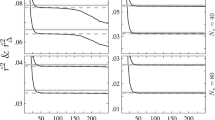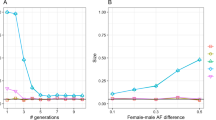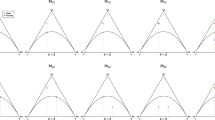Abstract
BENNETT1 has shown that a stable selectively balanced polymorphism between two alleles can exist at a locus in the X-chromosome under conditions which are different from those determining stable equilibrium in the autosomal situation. In particular, it is neither necessary nor sufficient, in the sex-linked case, for the heterozygote in the homogametic sex to be at a selective advantage with respect to both homozygotes. It has previously been found2 that this principle of heterozygosity operates in the case of multiple allelic systems in autosomes in the following form: a necessary condition for stable equilibrium is that the viability of each homozygote be less than the mean viability of the zygotic population at equilibrium. It seems at first sight that no such heterozygosity principle operates in the sex-linked situation. It will, however, be shown here that it does do so in a somewhat modified form.
This is a preview of subscription content, access via your institution
Access options
Subscribe to this journal
Receive 51 print issues and online access
$199.00 per year
only $3.90 per issue
Buy this article
- Purchase on Springer Link
- Instant access to full article PDF
Prices may be subject to local taxes which are calculated during checkout
Similar content being viewed by others
References
Bennett, J. H., Nature, 180, 1363 (1957).
Mandel, S. P. H., Heredity (in the press).
Author information
Authors and Affiliations
Rights and permissions
About this article
Cite this article
MANDEL, S. Stable Equilibrium at a Sex-linked Locus. Nature 183, 1347–1348 (1959). https://doi.org/10.1038/1831347a0
Issue Date:
DOI: https://doi.org/10.1038/1831347a0
This article is cited by
-
Allozyme variation in bumble bees (Hymenoptera: Apidae)
Biochemical Genetics (1992)
-
Selection and mutation at a diallelic X-linked locus
Journal of Mathematical Biology (1991)
-
Allozyme variation, linkage disequilibrium and diploid male production in a primitively social bee Augochlorella striata (Hymenoptera; Halictidae)
Heredity (1990)
-
The opportunity for polymorphism and genic variation in social hymenoptera with worker-produced males
Heredity (1985)
-
Selection at sex-linked loci. I. A method of estimating total fitnesses
Heredity (1983)
Comments
By submitting a comment you agree to abide by our Terms and Community Guidelines. If you find something abusive or that does not comply with our terms or guidelines please flag it as inappropriate.



